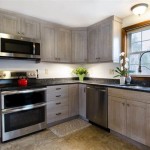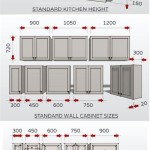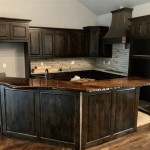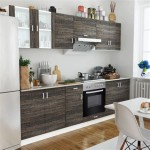Glazing Over Painted Kitchen Cabinets: A Comprehensive Guide
Transforming your kitchen cabinets with a fresh coat of paint is a rewarding project that can breathe new life into your space. However, to ensure a durable and visually appealing finish, glazing over the painted cabinets is a crucial step that many often overlook.
Benefits of Glazing
Glazing offers several advantages:
- Creates depth and dimension, enhancing the design
- Protects the paint from wear, scratches, and stains
- Adds a subtle sheen, making the cabinets appear more luxurious
- Uniformizes the color and texture of the paint
Choosing the Right Glaze
Selecting the appropriate glaze is essential. Consider the following factors:
- Type of Cabinet Paint: Choose a glaze compatible with the paint type used on the cabinets.
- Finish: Glazes come in various finishes, such as matte, satin, and glossy. Decide on the desired level of sheen.
- Color: Select a glaze that complements the cabinet color, adding depth and interest.
Preparing the Cabinets
Before glazing, ensure the painted cabinets are clean, dry, and free of dust.
- Thoroughly clean the cabinets with a mild detergent and warm water.
- Allow the cabinets to dry completely, preferably overnight.
- Use a tack cloth to remove any remaining dust particles.
Applying the Glaze
To apply the glaze:
- Thin the Glaze: Dilute the glaze with a glazing medium according to the manufacturer's instructions.
- Use a Brush or Sponge: Dip a brush or sponge into the thinned glaze and apply it in thin, even strokes.
- Work in Sections: Glaze one section at a time, allowing it to dry slightly before moving on.
- Remove Excess: Use a clean cloth to wipe off any excess glaze that may have pooled.
Drying and Curing
Allow the glaze to dry completely, following the manufacturer's recommended drying time.
- Leave the cabinets in a well-ventilated area for several hours.
- The glaze will typically cure within 24-48 hours.
- Once cured, the glaze will achieve its full durability and protection.
Finishing Touches
For a polished finish:
- Consider using a protective topcoat, such as a clear polyurethane, to enhance the glaze's resistance to wear.
- Install new hardware, such as knobs or handles, to complete the updated look.
Conclusion
Glazing over painted kitchen cabinets is a simple yet transformative technique that enhances the aesthetics and durability of your cabinetry. By choosing the right glaze, preparing the cabinets properly, and applying it meticulously, you can achieve a stunning and long-lasting finish that will elevate your kitchen's design.

How To Glaze Kitchen Cabinets

How To Glaze Kitchen Cabinets Diyer S Guide Bob Vila

How To Glaze Cabinets At Home With The Barkers

How To Glaze Cabinets At Home With The Barkers

Rescuing And Reviving A Glazed Distressed Kitchen Bella Tucker

How To Glaze Cabinets At Home With The Barkers

How To Glaze Kitchen Cabinets Diyer S Guide Bob Vila

3 Great Reasons To Glaze Your Kitchen Cabinets

Porchswings N Honeysuckle Paint And Glaze Cabinet Tutorial Kitchen Cabinets Makeover Renovation Glazed

Custom Kitchen And Bathroom Cabinets Vanity Hardware Del Wood








